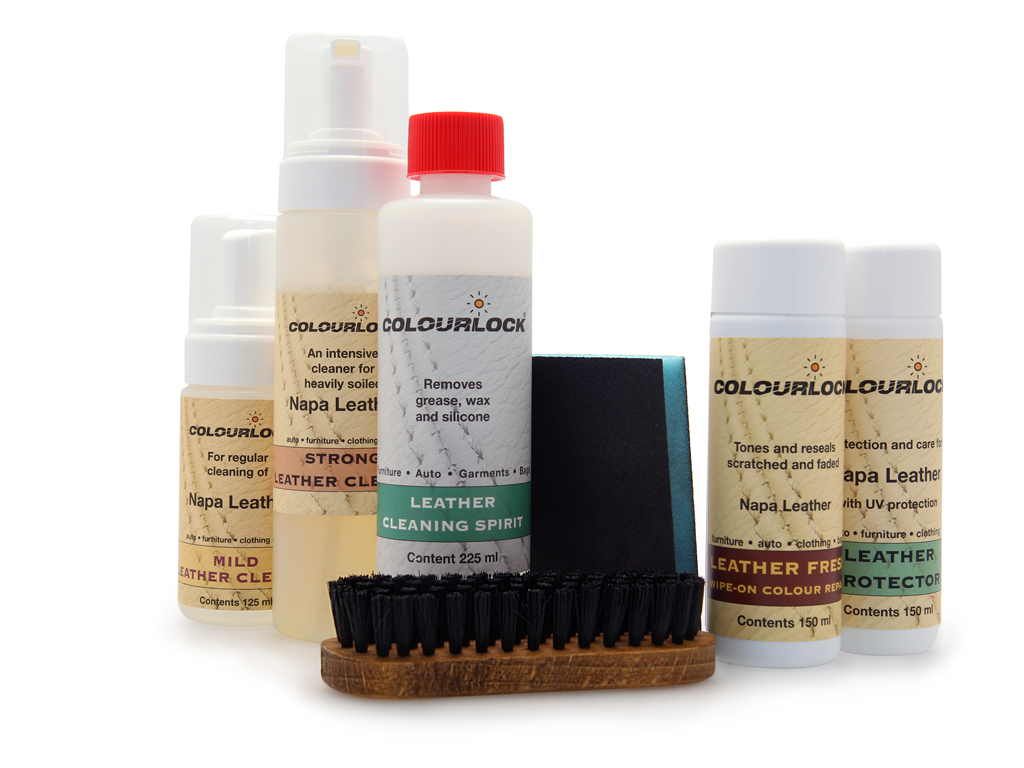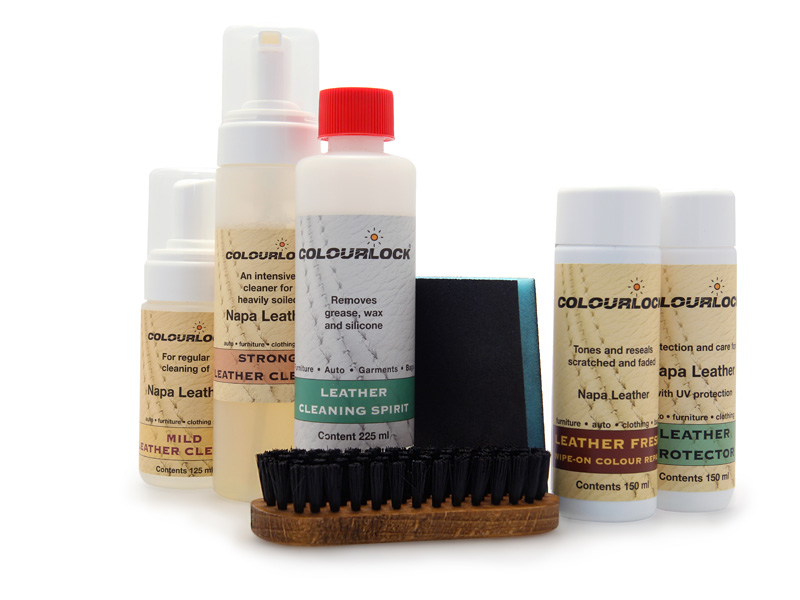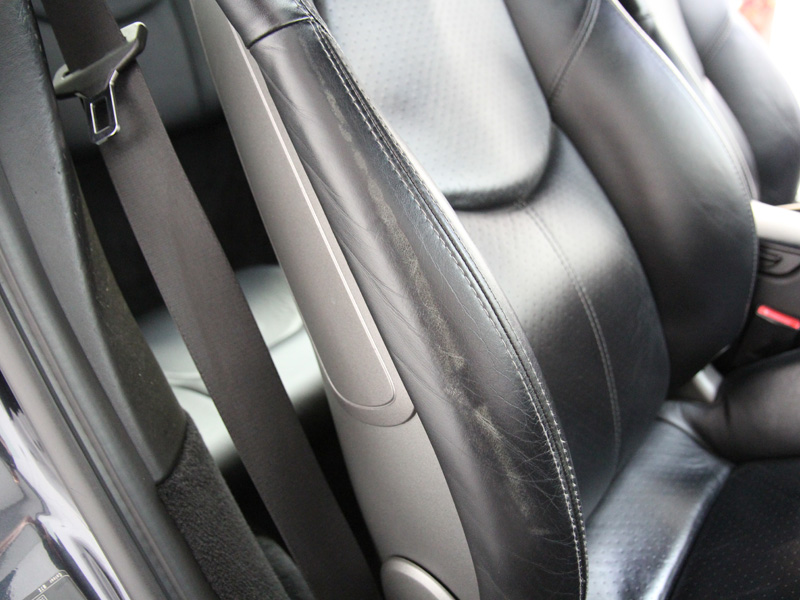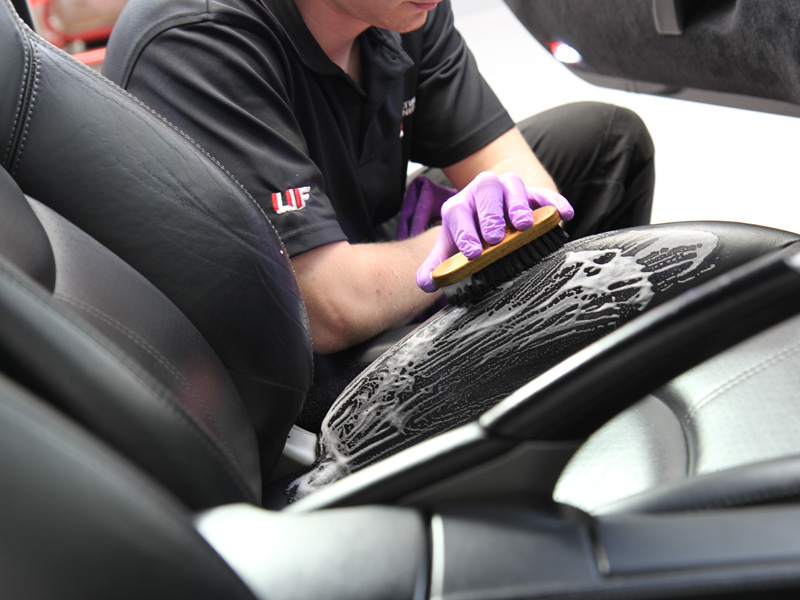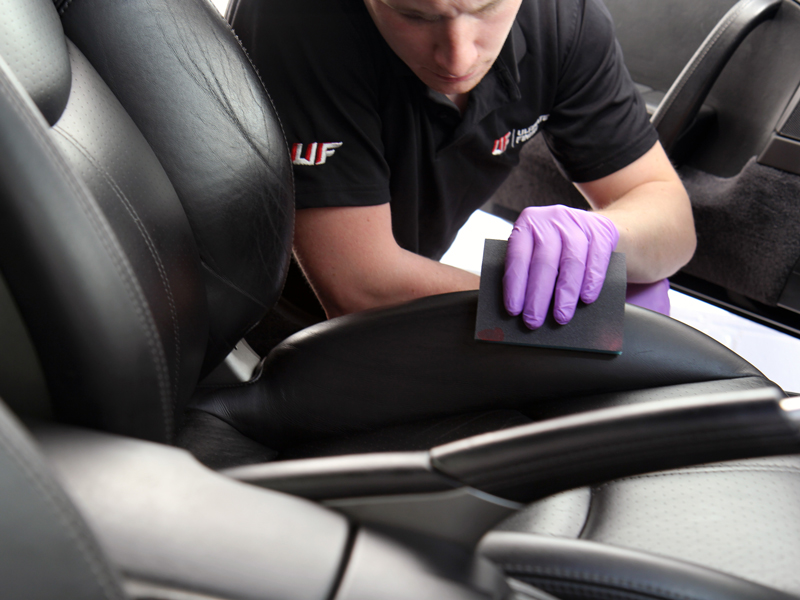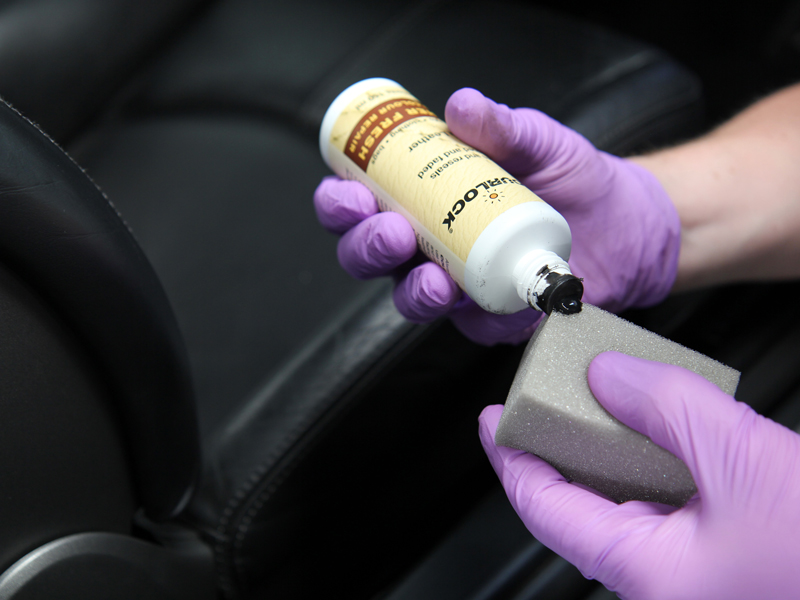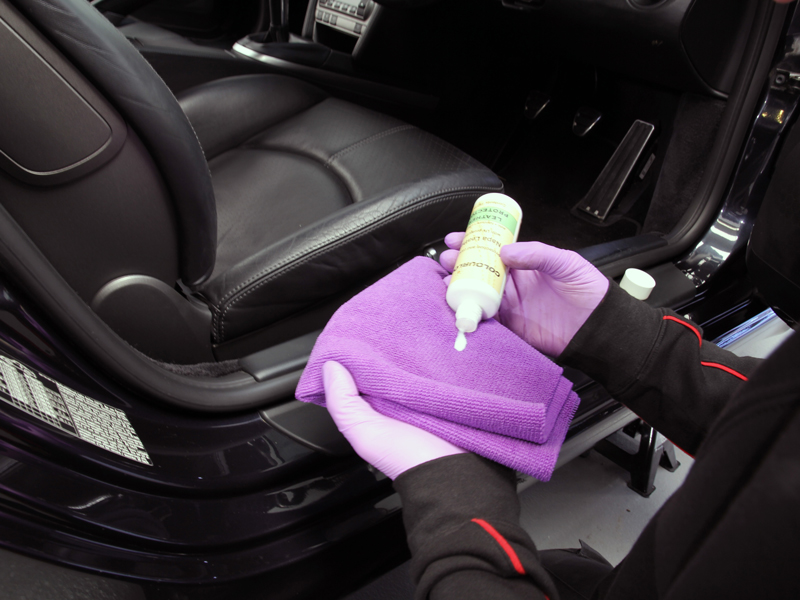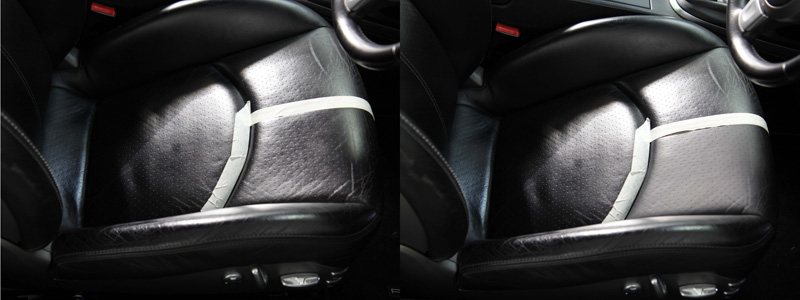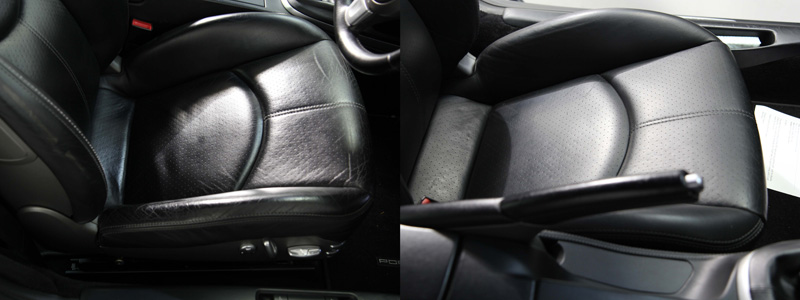Leather Restoration On A 2006 Porsche 997 Carrera S
Often, when it comes to protecting a vehicle, attention focuses primarily on the exterior of the car: the paintwork, the wheels, the trim. However, no matter how impressive the exterior, the interior has the potential to let the overall picture down – an important factor to consider, particularly when considering resale value.
This 2006 Porsche 997 Carrera S was a recent acquisition with some 50k miles on the clock and, unsurprising given the age and mileage the leather interior was looking decidedly worn. Subsequently, the owner brought it to UF’s Brands Hatch based Detailing Studio to have the leather cleaned, repaired and the colour restored.
The black leather interior had some obvious signs of wear: it was creased and had abrasion marks along the edges of the seats. This is quite common as it’s where the majority of friction occurs as people enter and exit the car. – Matt Back, UF Detailing Studio
Over time, as well as the obvious signs of wear, the leather had developed a high-shine making it appear plasticky in places.
The unnatural gloss is derived from a combination of skin oils and the use of thick leather ‘nourishing’ creams. Modern leather is sealed with a topcoat, so cheaper creams are not absorbed by the leather. Instead, they remain on the surface and leave a residue – hence the shine which also attracts dust and dirt. As people move around in the seat, the grease and dust form an abrasive paste, eventually grinding the surface of the leather. – Matt Back, UF Detailing Studio
Underneath the shine, it was clear to see the pigment had faded. This is quite common with automotive interiors as they are particularly susceptible to UV damage.
The glass windows intensify the strength of the sun, the UV attacks the pigment and the heat dries out the natural oils, causing the leather to crack and fade. Although sealed leathers are treated to help prevent this, over time the UV exposure has an accumulative effect. Unless the car is kept indoors or has a car cover on when it’s parked outside, it’s almost impossible to prevent. – Matt Back, UF Detailing Studio
The Colourlock range of leather care products includes everything required to repair cracked, torn, faded or greasy leather. For this restoration a Colourlock Leather Fresh Kit matched to the 997’s Black leather was used.
The first step in the restoration process was to thoroughly clean the leather. Colourlock Mild Leather Cleaner was sufficient to clean most of the interior, although a couple of stubborn spots responded better to Colourlock’s Strong Leather Cleaner. A Leather Cleaning Brush was used to ensure the foaming cleaner was fully worked into the fine grain of the leather, lifting out all traces of dirt before being wiped away.
Once clean, the leather was then treated with Colourlock Leather Cleaning Spirit to remove oily stains and any traces of previously used leather care products.
The gloss on the leather is oil-based and it’s essential these oily deposits are stripped off prior to applying a dye, otherwise, the dye won’t adhere properly. Leather Cleaning Spirit removes the oils, flashing off to leave the leather residue free. – Matt Back, UF Detailing Studio
The scuffed and damaged areas were then finely sanded, providing a slightly textured surface in preparation for the application of the leather fresh dye.
By sanding the leather you roughen it ever so slightly, preparing the surface to allow the dye to soak in. The process is completed using an ultra-fine sanding pad and once the whole treatment is completed it’s impossible to tell that it has been sanded. – Matt Back, UF Detailing Studio
The leather was now ready to be re-coloured. Colourlock provide a range of colours specific to each car manufacturers leather in order to ensure an exact colour match. However, many manufacturers use a similar shade of black and for this Porsche, the standard black dye was a perfect match. The Leather Fresh dye was applied to an applicator sponge and wiped over the area, working from seam to seam in order to completely blend the colour and provide a uniform finish for the leather restoration.
If you try to apply a dye to one section you end up with a patchwork effect – there will always be a bit that’s darker than the rest of that section. To fully restore the appearance it’s necessary to ensure the whole section has an even finish, so working with the grain, from seam to seam is the best way to ensure that. – Matt Back, UF Detailing Studio
The re-coloured leather was dried using an air blower for around sixty seconds and then left for a couple of hours to fully cure. The result was a natural matte finish which was now ready for final protection and sealing using Colourlock Leather Protector.
Leather Protector helps keep leather supple without using heavy oils. It contains antioxidants to help prevent UV fade which also inhibit the evaporation of the leather’s natural oils – the leading cause of creasing and cracking. With the dye applied, the surface of the leather has a matte appearance, finishing with Leather Protector produces a natural satin sheen similar to that found in new or nearly new cars. – Matt Back, UF Detailing Studio
The whole leather restoration process took several hours to complete, but the final results speak for themselves.
The Colourlock range is available now at UF. For advice on the care or restoration of your vehicle’s leather interior or to arrange a free vehicle appraisal, call 0333 800 8004.

